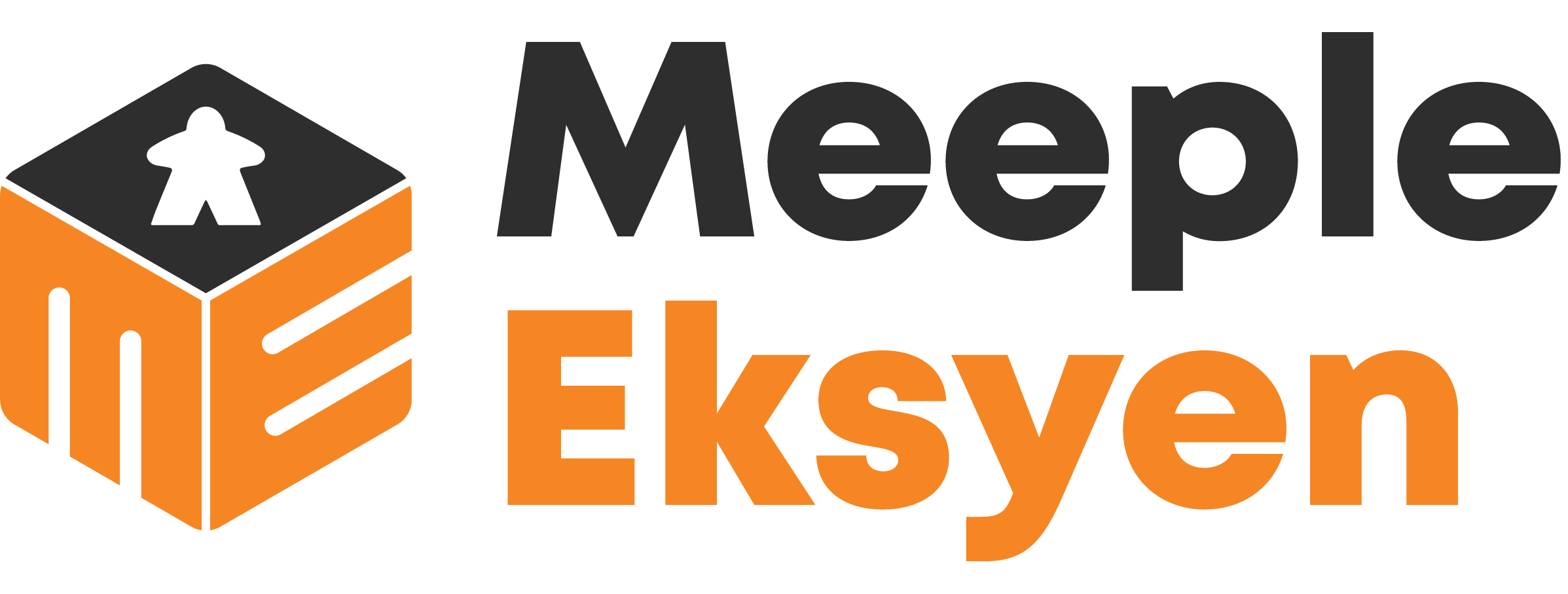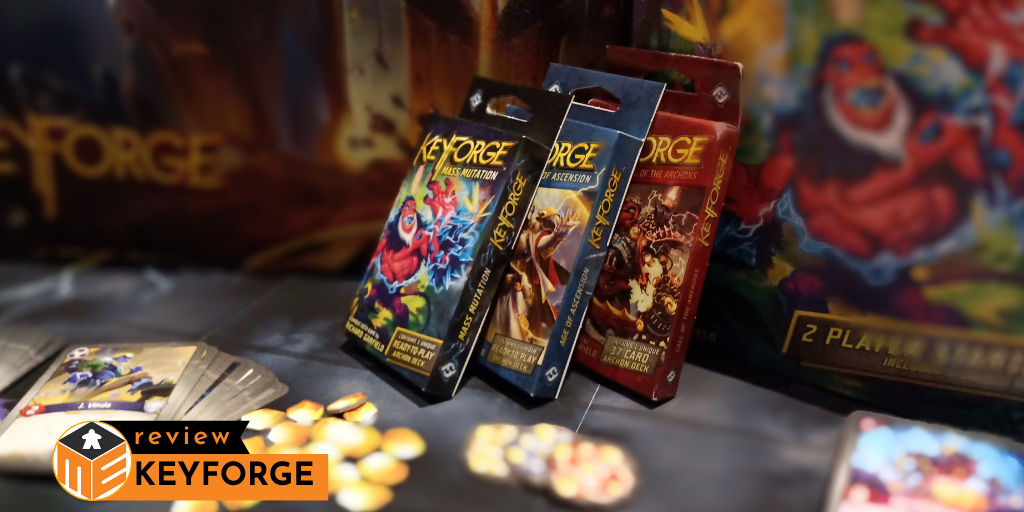Archons, today we want to share what we deem important as the basic strategy to play KeyForge. These tips are rather essential for new players. As we discussed in our previous article, KeyForge is a game fully packed with decisions and predictions. The player needs to sustain and process a lot of information at once. Starting from which house to play this round, which cards to play and their sequence, and many others, we have to crunch it all and decide what to do fast.
We have summarized the most important points to consider in this basic strategy guide. We hope you can be more confident playing KeyForge after reading this article!
FIRST BASIC STRATEGY’S DECISION: TO MULLIGAN OR NOT TO MULLIGAN
In Keyforge, you can do over the cards only on the first draw. Simply put all cards back to the deck, shuffle it, and draw another set with one less card than before. Despite this drawback, why can Mulligan be an important basic strategy? Keyforge is similar to a racing game, actually. That means, your Mulligan may give you the chance to dominate your opponent, giving you the momentum to press in the early game.

Tips 1: Identify your key cards
Our first tip in this basic strategy guide is to know your deck and decide which cards are essential for your game. These cards should be in your hands since the first draw. If they are not there, do Mulligan. As the first player, you can only play a card during your first turn, and it will define how your opponent would react. Imagine if you play cards with Leader traits, or Ember Imp or Succubus or Custom Office in the first round. One of them surely seals your advantages since the early game. In contrast, when playing as the second player, you must prepare to neutralize your opponents’ key cards.
Tips 2: Several cards from one House in your first draw
Getting your key cards is not the only reason to not Mulligan. If the most cards in your first hand belong to one House, you do not need to do over. These cards can always be played in 1-2 first rounds without costing you the momentum. However, if you get various cards from different Houses, then it would be best to Mulligan. This decision becomes more cardinal when you don’t have your key cards at all.

SECOND DECISION: HOUSE SELECTION
At each round, the active player must choose a House to play. As a rule of thumb, it is wise to pick a House with the most cards to play both in hands and on the board.
Tips 3: Do not focus only on the cards in hands
This is the typical habit found in most new Keyforge players. They only pick a House that has the most cards available in their hands. To all intents and purposes, this decision looks like a prospective cycle because you can play them and draw as many new cards as possible. However, the habit to look only at your hands violates the basic strategy! Not only you neglect the cards available on the board, some cards you recently played this round may not instantly become available to activate.
It is favourable to consider what you have on the board, too. Sometimes, it makes more sense to reap or fight with the creatures you have summoned. In short, pick the House that brings you more advantages. For example, try to generate Æmber or steal ones from your opponent. Maybe you can also pre-empt your opponent to dictate the game, giving you a better condition and keep the momentum. If you have successfully got rid of this bad habit, you will always control the tide in your favour.
THIRD DECISION IN KEYFORGE: DISCARD UNNECESSARY CARDS
This one is a tough decision to make in our basic strategy guide. There’s no obvious way to tell when to discard cards in Keyforge. When you have insignificant cards you basically don’t need (yet), it would be in order when you discard them. Nonetheless, life is not always rainbows and butterflies, and so is Keyforge. What if the cards in question are your key components in your gameplay? For sure, the general idea is to keep them, right? Sometimes, your key cards appear when you don’t really need it. What to do next?
Tips 4: Don’t hold (non-essential) cards for too long
Keeping your key cards, be it reaction, trap, and counter card to turn the tide, sounds reasonable in most competitive card games. It is proven to be the bread-and-butter to shock the opponent and take control over the game. Instinctively, we would to the same in Keyforge. Who would want to discard Gateway to Dis, Too Much to Protect, and many other notable cards with strong effect, right?
However, considering the limited hand-size in Keyforge, our basic strategy guide does not recommend to hold unnecessary cards for too long. Limiting the new cards you can draw each round, it is better to discard those you cannot use immediately and in short-term. Discarding these cards does not mean you will not have it back in your hands, so do not worry about it not getting recycled back into the deck.
Additionally, the non-essential cards tempt you to play them not at the right time. The result? You play a House at a poor timing, rendering your play inefficient and ineffective. We suggest you in this basic strategy guide to predict the board state and consider the Æmber, too. If none of them would change in 1-2 turns ahead even when you play the cards you have, you better discard them, rising your chance to counter with better hands. There is no penalty to discard cards in Keyforge. You will always shuffle the discard pile to build your deck again, so worry less about not having your key cards back if you don’t really need it in the short-run.
Just like other basic strategy guide for common tactical games, there is one exception for this point. If you draw the only key card to unleash your play style, keep it. For example, if you only have one card for Æmber control, keep it in hands when you drew it. Not only because it’s the only card to do the job, this kind of card can potentially turn the tide of the game in an instance.
FOURTH DECISION: THE CREATURES, FIGHT OR REAP
In Keyforge, fighting is not a necessity to win the game. Unlike the other card games out there, we don’t really need specific creatures to annihilate the opponent’s entities and claim the victory. Reaping with your creatures in Keyforge is the last point in this basic strategy guide. In this game, gaining Æmber is more important than getting into battles.
Tips 5: Identify your opponent’s key cards and shift priority accordingly
However, if your opponent plays some dangerous cards, and they stay on the board, react accordingly! Do not wait until these creatures and/or artefacts get activated. They may trigger a snowball effect, and it’s too late to stop it. In this case, you better fight than reap. For example, if there are cards like Duskwitch, Hunting Witch, Witch of the Eye, cards with Leader trait, and many more.
If you cannot remove these cards from the board, still, it is wise to reap. You need more Æmbers to keep momentum and the gap wider when you are leading, and to close it if you are trailing behind.

If you see this card on your opponent’s board, what will you do?
CONCLUSION
All the points in this basic strategy guide is not designed to be the absolute how to play KeyForge. Please remember that we wrote this to give you some perspectives to consider during gameplay. The bottom line is, each deck is unique and the owner needs to know how to utilize the cards within the best. If you have other points to share, feel free to write in the comments below.
Happy forging!
Pictures are from Fantasy Flight Games. My deck can be found in the Compendium
I am an owner of a board game café and KeyForge enthusiast. The latter one is the topic I will contribute mostly in this blog. I have been playing board games since 2015. Not to brag, but my collection is growing every year. As an owner of a board game-related establishment, my favourite phrase is “What are we gonna play tonight?” You can find my café in Depok, Indonesia.





